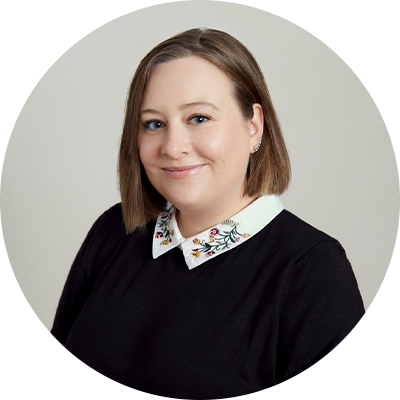Max-out your RRSP contributions
Canadians are very lucky to have a government sanctioned way to reduce their yearly income and save on tax by deferring payment until a later date. Introduced by the federal government in 1957, the RRSP (Registered Retirement Savings Plan) was designed as a way to encourage Canadians to put more money away for retirement. Since then, it has become one of the country’s most popular savings vehicles.
Each year you’re allowed to set aside a specific amount of your income (18% of your past year’s income or a set maximum amount determined yearly by the government, whichever is smaller) to put it into an RRSP. The amount you move into an RRSP is deducted from your overall income. So, for example, if you earn $60,000, and you put $10,000 into an RRSP account you will then be taxed as though you only made $50,000.
To see how much you’re allowed to contribute you just need to look at Form T1028, which the government sends you after assessing your income tax. Or you can contact the CRA directly or look up your account info online by visiting the CRA website.
It’s vital to understand that an RRSP is not a way to forever escape paying tax on your income. An RRSP is a tax-deferral vehicle, meaning that you will eventually have to pay tax on the amount you put aside when you withdraw the money from the RRSP account. The idea, however, is that you will be earning less when you withdraw money from your RRSP account and thus be in a lower tax bracket in retirement and therefore pay less tax overall.
Make sure you can afford to lock in your money into an RRSP account before you invest. There are very strict rules about when you are allowed to make withdrawals without being subject to an immediate withholding tax (usually only for educational purposes or to buy your first home). Basically, if you are using an RRSP to pay less tax you have to be in it for the long haul because accessing your money is not a straightforward process.
Put money into a TFSA
My personal favourite way to save on taxes is to put as much money as I can (within set yearly allowances) into my tax free savings account (TFSA). In my opinion, a TFSA is an even better way to save on taxes than an RRSP because the money in a TFSA is tax free even when you withdraw funds, whereas with an RRSP account you are just deferring your tax payments.
The TFSA was introduced in 2009 and each year the government sets a max amount that you can contribute (you can read more on the Government of Canada’s website). The set yearly deposit amounts for TFSAs have ranged from as low as $5,000, to as high as $10,000 in 2015. Note that since 2019, the annual contribution limit has been set at $6,000. The TFSA is an incredible boon to Canadians seeking some tax relief because no taxes whatsoever are applied to any interest earnings, capital gains or dividends that you earn in your account. It’s the easiest and absolutely best legal way to thwart the taxman—so if you don’t yet have a TFSA account, get one!
Read: Best TFSA Savings Accounts in Canada
Hire a pro
Another one of my top tax-savings tricks is to turn to expert resources when tax time comes around. As a freelancer, I find that hiring a professional to do my taxes has saved me hundreds in tax dollars (even after figuring in the yearly cost of my accountant).
While you may be able to do taxes yourself if you work in a traditional job and your employer deducts taxes directly from your income, freelancers and gig workers have a much more complex time managing taxes. There may be deductions for a bevy of things like a home office, supplies and travel that are difficult to figure out unless you’re a trained professional. In some cases you may even need to get an HST number. Taxes aren’t simple and there are things that are very easy to miss if you don’t rely on a pro.
Related: How to File Taxes if You’re a Freelancer
If you want a little more hand-holding you can always turn to TurboTax Live Full Service, where real experts help you with your taxes or can even do them for you. You can also talk online to experts and get unlimited tax advice while you’re filing.
Use professional software
Even if you’re not a freelancer, there are lots of deductions or other kinds of allowances that are easy to miss when you do taxes on your own. If you don’t want to spend money on an accountant, consider looking into top-grade software to assist. The right software can help you find lots of ways to pay less taxes, all while ensuring you don’t run afoul of the CRA.
TurboTax, for example, has both free and paid versions.
With the free version you can fill out your tax return with a simple step-by-step process with all the correct forms and even import your info directly into your return from the CRA. With the paid version, the software goes through all the relevant income tax sections clearly and even helps you figure out exactly what tax slips are necessary. The software also runs a thorough check of your tax info to see if you’re eligible for up to 400 additional tax credits and deductions. It’s a bit like having your own personal accountant.
Family-friendly tax planning
We have a progressive tax system in Canada, which means that the more you make, the more you pay in taxes. Eligible couples can take advantage of something called income splitting, which is when one spouse can reduce their income (and thus their tax bracket) by transferring some of their income to the spouse who earns less. In some cases you can also transfer dividend income or taxable gains from your investments to a lower earning spouse, which would also lower your taxable income.
The Canadian government has very defined rules about when and how couples are allowed to split their income so be sure you understand what you’re doing, or get the help you need. The government website also offers some helpful direction on income splitting.
Medical expenses
Many Canadians don’t realize they can write off some medical expenses as a way to save money come tax time. Depending on how much you spend a year on healthcare costs, you could be eligible for some tax credits to help offset medical expenses like dental visits, prescriptions, some nursing home costs, medical equipment, and more. If you want the credit, it’s vital to have proof of any medical expenses so make sure you keep your receipts.
Last word
You can’t escape paying taxes (nor would you want to, they are, after all, what helps keep Canada running pretty smoothly) but there are many smart—and more importantly, legal—ways to ensure that you don’t pay any more taxes than you need to.







